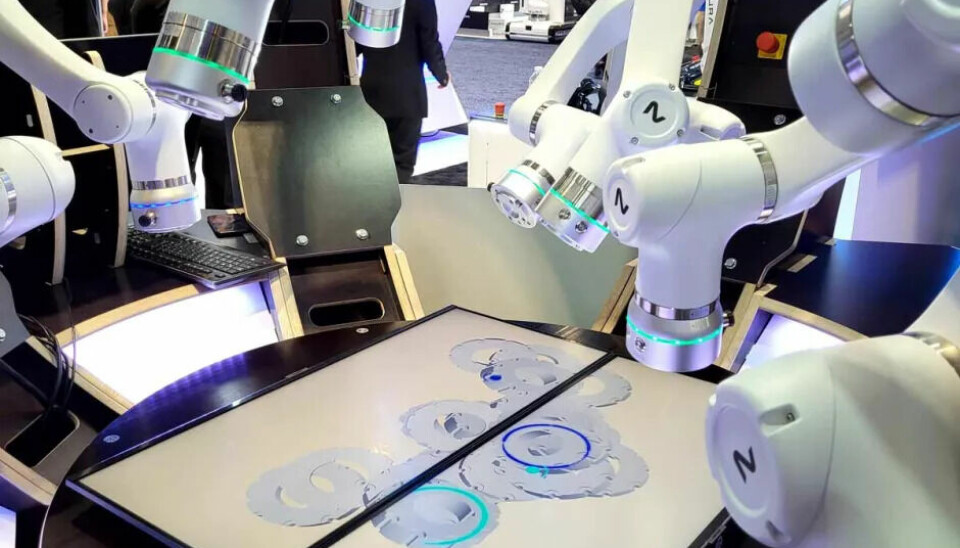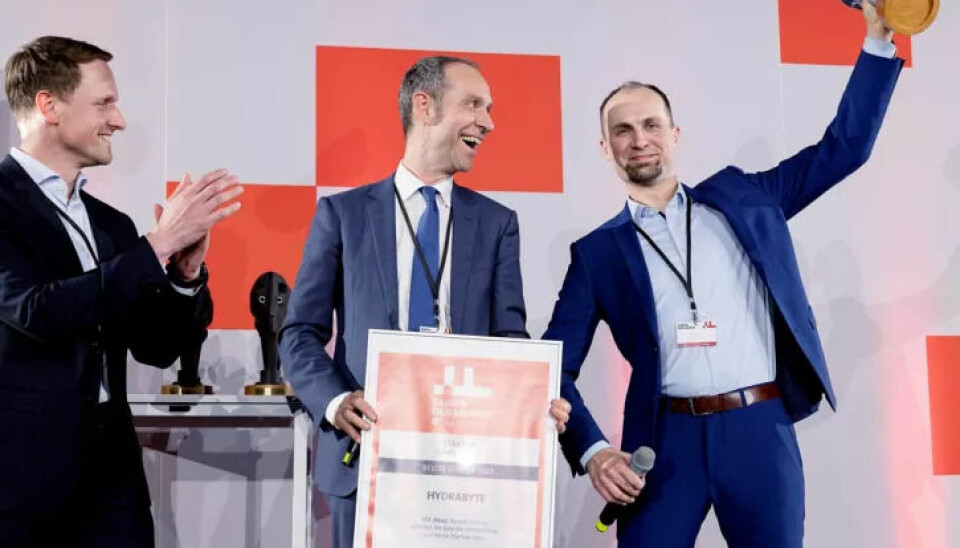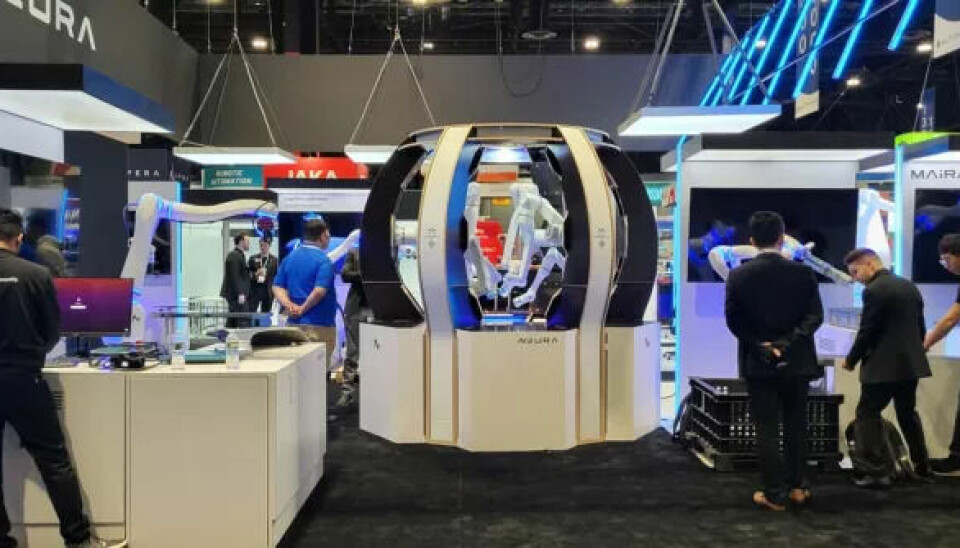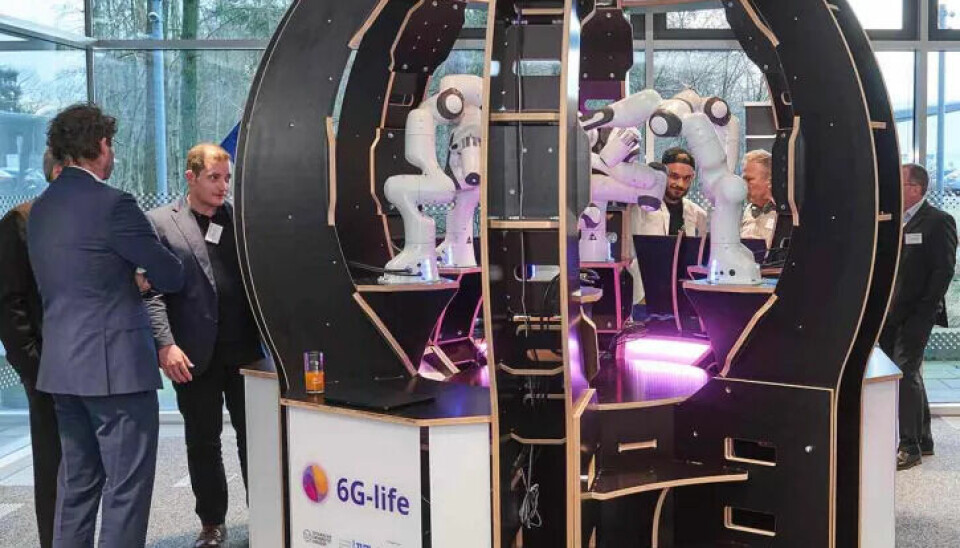Start-up winner factory of the year: Evasive Robotics
This is how a start-up plans to greatly simplify the use of robots

The potential of robotics is far from being realized, says the start-up Evasive Robotics. The interaction of multi-robot systems, drones, and driverless transport systems is to be made usable beyond mass production.
The idea for the start-up came from Frank Peters. His sketch of a demonstrator showing a technology that coordinates the movement of multiple robots in a confined space convinced Prof. Frank Fitzek from the Telekom Chair at TU Dresden. The funding for the first demonstrator was secured, but things had to move quickly: shortly thereafter, the "Robosphere" was to be presented at the Spin2030 science fair. At this year's "Factory of the Year," Evasive Robotics emerged as the winner of the start-up challenge.
"Robotics hardware is incredibly powerful, but also incredibly difficult to use. There are many individual solutions for how the hardware of different robots is controlled - for example, to grasp something," explains co-founder Stefan Zetzsch. When thinking about the interaction of many robots, most people envision the multi-robot systems of large car manufacturers.
"The OEMs can amortize these systems because they produce very high quantities in mass production or large series. Everywhere else, however, the effort to put multi-robot scenarios into operation is far too high," says Zetzsch.

This is where the idea comes in: Significantly reduce programming efforts, make the potential in interaction usable for other scenarios, and get 'more' out of the 'enormously potent' hardware.
Vision: Control entire production lines in real time
Above all, Peters, as a trained mechanical engineer and robotics scientist, wanted to develop a universal solution that could be used independently of manufacturers and kinematics. For example, the diverse kinematics for articulated robots should be able to be mapped.
“With our technology, we are also able to coordinate driverless transport systems, drones, portals, doors, or cylinders. This allows everything to be orchestrated and controlled in a larger scenario, such as a production line,” describes Zetzsch the vision of the future.
The start-up is still in the founding phase. Idea generator Frank Peters is set to become CEO and responsible for development. The second co-founder is automation engineer David Kuß, who has already commissioned robotics and automation lines in Taiwan, the USA, and Switzerland in his profession and brings this practical experience.
Stefan Zetzsch himself joins as the third co-founder in the group as a networker. He has worked in the industry for about ten years and has experience in medium-sized businesses as well as leading large teams. Currently, five people plus students are working on the idea as part of a research group.
However, by the end of the year, the team is expected to grow to 18 employees - the majority of experts in software, robotics, and automation have already been recruited. On one hand, the Robosphere exerts real fascination, and on the other hand, there is a large pool of talent available at TU Dresden and HTW, explains Zetzsch, the rapid success in recruiting.

The technology uses little-researched algorithms
The algorithm is real-time capable and is expected to be able to respond to recognized people and objects in the room in the future. This gives the technology the potential to secure the interaction of humans, robots, and cobots beyond barriers and fences in the future, says the co-founder.
However, a lot of technical and regulatory development work is still necessary here. For example, the start-up is active in the SIRO research project on human-machine interaction.
The technology is based on the use of largely unexplored algorithms. “With our mathematical approach, we calculate in advance where the robots will move, so we look a bit into the future and always check this against the current position to enable real-time control,” explains Zetzsch the concept.
For this, the entire movement network is continuously monitored to react to all influences. The core recipe of the founders is that there is no hard-coded programming for individual robot movements. Instead, the self-programmed control software necessarily leaves out a large part of the previous control intelligence, as it is not multi-robot compatible.

Only target and job are defined
So far, programming for the interaction of multiple robots typically worked according to stochastic pathfinding logics. According to the master-slave principle, one robot is planned first, the second then has to act around the blocked space of the first, and so on.
“The more robots and the more solutions there are, this approach quickly becomes blocked and involves much more computational effort,” says Zetzsch. Instead of planning fixed paths, the new technology only defines the target and job, but not how the robot specifically accomplishes it.
Currently, the concept still works with cables. At present, wireless transmission of control data with 5G is not yet possible, even though a wireless application for motion coordination is, of course, being pursued. However, this is still a subject of research, as 5G is not considered performant enough by the startup. In this context, experts are also researching with the 6G Live research network of the next mobile generation.
A feast for mechanical engineering
For mechanical and plant engineering, the main benefit of the technology is that the costs for programming robots are expected to decrease significantly. “Today, a lot of time and money is needed to bring applications into practice, which is handled by our software. Additionally, there is much more flexibility during ongoing operations. Then robotics becomes worthwhile even for lower quantities and more complex products to manufacture,” states the co-founder.
Especially with shorter product cycles, quickly adaptable automation solutions are needed.